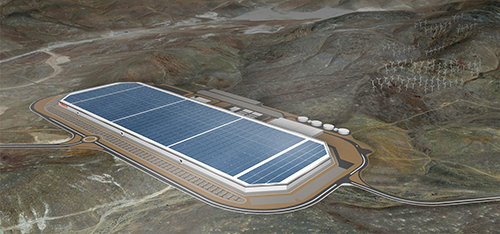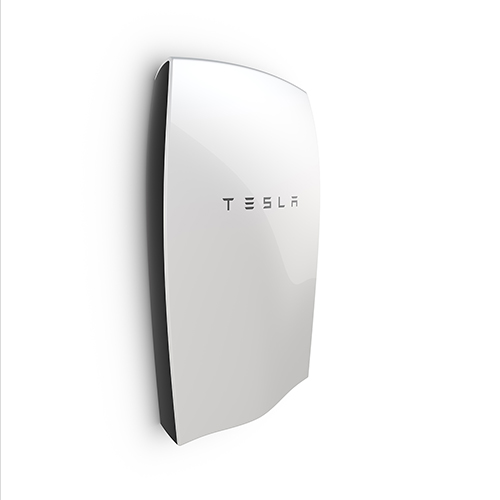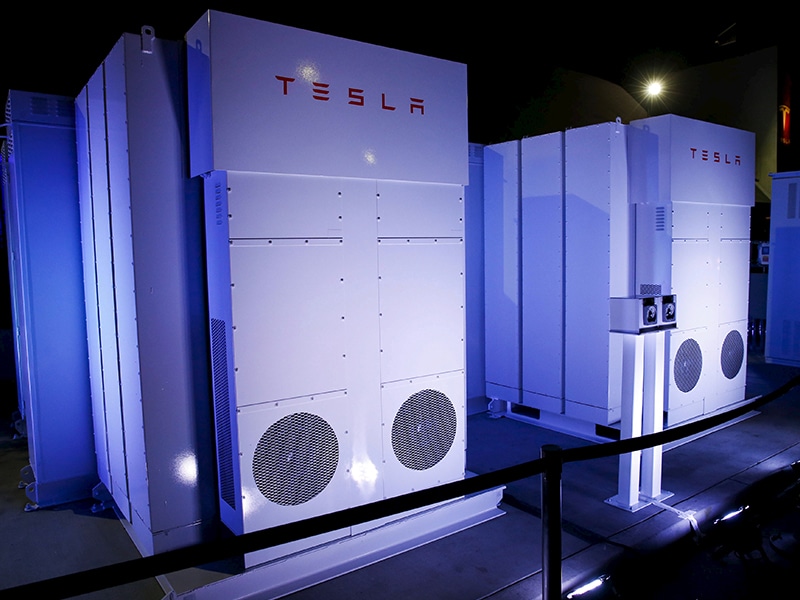The response to last week’s launch of Tesla’s Powerwall and Powerpack batteries for home and plant solar power storage has been “crazy off the hook” the company’s chairman and CEO Elon Reeve Musk says, with the units attracting 38,000 and 2,500 reservations respectively.
Speaking during Tesla’s first-quarter earnings call, electric-car entrepreneur Musk says the Powerpack will typically be bought by utilities or large industrial companies for heavy industrial work in sets of 10 Powerpacks or more per installation, which means 2,500 reservations actually translates to 25,000 units.
Tesla says its energy storage systems are based on the powertrain architecture and components of Tesla electric vehicles and “deliver broad application compatibility and streamlined installation by integrating batteries, power electronics, thermal management and controls into a turnkey system”.
“Tesla’s energy storage,” it continues, “allows businesses to capture the full potential of their facility’s solar arrays by storing excess generation for later use and delivering solar power at all times. Tesla Energy for Businesses anticipates and discharges stored power during a facility’s times of highest usage, reducing the demand charge component of the energy bills.”
The company’s utility-scale systems group 100kWh battery blocks to scale from 500kWh to 10MWh and over. These systems are capable of two-hour or four-hour continuous net discharge power using grid-tied bi-directional inverters.
Tesla says the benefits of its batteries to businesses are many and varied, including the ability to: maximise consumption of on-site clean power; avoid peak demand charges; buy electricity when it’s cheapest; get paid by utility or intermediate service providers for participating in grid services; and back up critical business operations in the event of a power outage.
“We are now preparing our supply chain and production teams to start volume builds on these new products in Q3,” Musk says in a letter to shareholders. “Production will begin at the Tesla Factory in Fremont, and in Q1 2016 will expand into the Gigafactory and accelerate significantly.
“The total addressable market size for Tesla Energy products is enormous and much easier to scale globally than vehicle sales. We are pursuing product certification in multiple markets simultaneously and plan to ramp deliveries in the US, EU and Australia in Q4.”
So while Australia is one of the first markets on the Tesla Energy map, the wait for these products might be longer than anticipated.
In his earnings call, Musk says “there’s no way that we could possibly satisfy this demand this year”.
“We basically sold out through the middle of next year in the first week,” he says. “It was just crazy. We had 2,500 requests from companies that want to distribute and install the Powerwall and Powerpack. We can’t even respond to them. We have to, like, triage our response to those who want to be a distributor.”
 |
|
An artist’s impression of the Tesla Gigafactory.
|
The Gigafactory referred to above is a Tesla plant being built near Sparks, Nevada, whose purpose was initially to supply enough batteries to support the company’s projected electric vehicle demand of 500,000 cars per year in the latter half of this decade. Without it, Tesla would require today’s entire worldwide production of lithium ion batteries.
However, with the announcement of the Tesla Energy products and the response from the home and business/industrial markets, the plant now seems woefully inadequate.
“We’re fairly confident at this point that the entire Gigafactory output could just do stationary storage,” Musk says. “I mean it’s like, wow, okay. Well, we need to make cars too, so we’re just trying to make the factory bigger. That’s, like, the total logic. It’s a lot more complicated than that.”
Two companies that are currently testing the Tesla battery systems in the United States are discount retailer Target and Jackson Family Wines in Santa Rosa, California.
“As part of Target’s support to our communities, we’re excited to partner with Tesla on a pilot test at select Target stores to incorporate Tesla Energy Storage as part of our energy strategy,” Target energy management senior group manager David says.
“Tesla’s cutting-edge technology offers unique benefits to powering these stores, most importantly relieving stress from the electrical grid at peak times, furthering Target’s investment in designing and operating energy-efficient and sustainable buildings.”
Jackson Family Wines says it has “taken a two-fold approach to energy management at our wineries by improving operational efficiency across all levels of our organization and reinvesting those savings in onsite renewable energy systems”.
“With Tesla’s stationary energy storage solution, JFW can significantly mitigate energy use around four areas that account for the most consumption in our winemaking process: refrigeration/cooling, lighting, compressed air and process water treatment,” it says.
“Each battery pack will draw electricity from the grid or our onsite solar arrays during times of low demand and store it for later use to smooth out energy spikes.”
 |
|
The Tesla Powerwall battery for home use.
|


